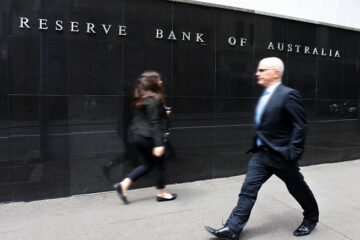A key business sector could challenge Wall Street’s recession forecasts over the coming months, a closely tracked report indicated Wednesday, as the broader economy continues to outperform in the face of sticky inflation and elevated interest rates.
The National Federation of Independent Businesses, a lobby group representing smaller U.S. companies that comprise around half of the domestic economic growth, reported its strongest reading of owner optimism in more than two years over the month of July, thanks to a surge in the broader economic outlook.
The headline reading of 93.7 is the highest since April 2020, although it remains below the long-term average of 98, a level it has failed to breach for more than two and half years.
NFIB Small Business Optimism Index – best since Feb 2022 pic.twitter.com/OOiZp6okO6
— Mike Zaccardi, CFA, CMT 🍖 (@MikeZaccardi) August 13, 2024
Still, more small business owners are looking to boost inventory investment, suggesting a solid demand view over the coming months. A net 38% of those surveyed reported having job openings that they couldn’t fill, suggesting a tight labor market.
The hiring aspect of the report could remain crucial for both the Federal Reserve and rate traders looking into inflation pressures over the coming months. Small businesses typically comprise around 55% of overall hiring in any given year.
U.S. banks reported flat demand for credit over the second quarter, but for the first time in two years, it wasn’t in retreat.
Shutterstock
The NFIB’s chief economist, Bill Dunkelberg, said that while welcome news, the higher readings belie the fact that tough times lay ahead as the economy slows and inflation remains elevated.
Small businesses: Upbeat but uncertain
“Cost pressures, especially labor costs, continue to plague small business operations, impacting their bottom line,” Dunkelberg said. “Owners are heading towards unpredictable months ahead, not knowing how future economic conditions or government policies will impact them.”
The NFIB’s hiring intentions survey, released prior to the Labor Department’s nonfarm payrolls report, was largely unchanged from June levels.
Related: Wall Street banks ring recession alarm
“That is noteworthy, given that this index has been the single best leading indicator of private payrolls over the past couple of years,” said Ian Shepherdson of Pantheon Macroeconomics. “The weakness in hiring and investment plans almost certainly reflects the ongoing pressure from very high rates and the associated pullback in bank lending.”
Interest-rate cuts would likely form the largest plank of support for the sector, which relies heavily on bank lending to fund longer-term expansion and near-term operating costs.
Traders suggest that the Fed is almost certain to make the first of a series of interest-rate reductions when it meets next month in Washington.
Curiously, even with the Federal Funds Rate holding at the highest levels in more than two decades and recession forecasts piling up, the Fed’s quarterly loan officers’ survey for the three months ended in June marked the first time in two years that demand for credit wasn’t in retreat.
Related: Bank of America’s CEO flags a big Fed risk
“Regarding loans to businesses, survey respondents reported, on balance, tighter standards and basically unchanged demand for commercial and industrial loans to firms of all sizes over the second quarter,” the report noted.
U.S. economic growth measures stay strong
However, a separate survey of global fund managers published by Bank of America suggests that the world’s biggest investors think the Fed needs to make at least four rate cuts to guarantee a soft landing—easing inflation without a recession—for the domestic economy.
As a result, they’re trimming exposure to U.S. stocks and moving assets into more defensive cash positions as they gauge the Fed’s rate-cut intentions heading into the year’s final months.
However, the broader measures of U.S. growth continue to impress. The Atlanta Fed’s GDPNow forecasting tool indicates a current quarter pace of 2.9% after the Commerce Department estimated growth over the three months ended in June at 2.8%.
More Economic Analysis:
Black Monday on Wall Street: 5 reasons stocks are plummetingAfter the Fed tipped markets over, now what?Jobs report triggers key recession warning signal as stocks plunge
Closer to home, BlackRock’s weekly investor update indicates the investment firm remains overweight U.S. stocks, thanks partly to upbeat tech-sector earnings. The firm notes that “macro data shows a slowdown, not a recession” for the world’s biggest economy.
“U.S. recession fears sparked the latest slide after U.S. payrolls data for July showed an uptick in the unemployment rate,” BlackRock analysts led by Jean Boivin wrote.
“Yet the unemployment rate is still remarkably low by historical standards — and it’s rising because of a growing labor force tied to immigration, not because of job losses,” he added. “Total U.S. payrolls have grown more than 1 million over the past six months, well above usual prerecession levels.”
Related: Veteran fund manager sees world of pain coming for stocks


